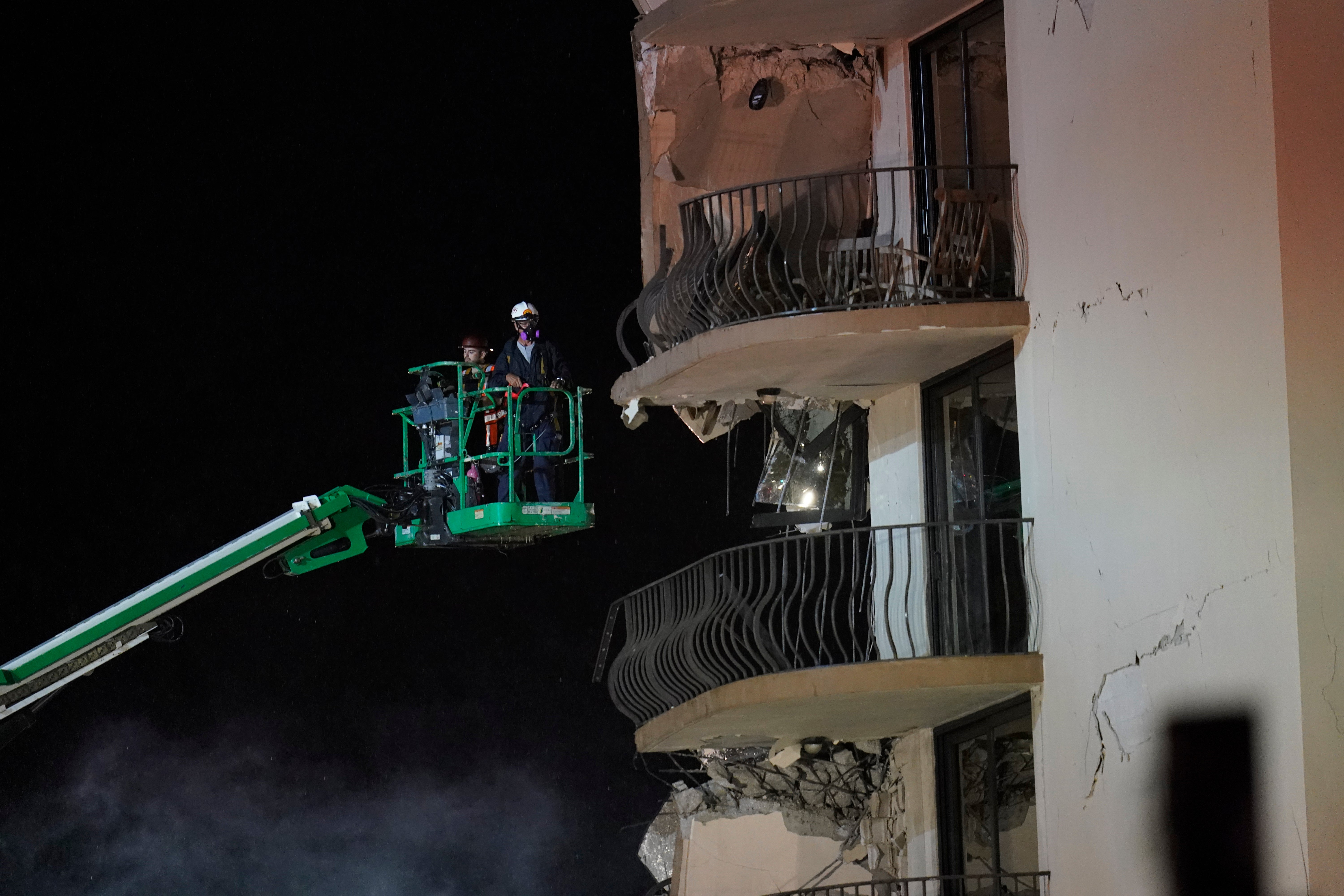Miami building collapse: Condo was sinking for decades and undergoing inspection, researchers say
The building had been sinking at a rate of about 2 millimetres a year in the 1990s
Your support helps us to tell the story
From reproductive rights to climate change to Big Tech, The Independent is on the ground when the story is developing. Whether it's investigating the financials of Elon Musk's pro-Trump PAC or producing our latest documentary, 'The A Word', which shines a light on the American women fighting for reproductive rights, we know how important it is to parse out the facts from the messaging.
At such a critical moment in US history, we need reporters on the ground. Your donation allows us to keep sending journalists to speak to both sides of the story.
The Independent is trusted by Americans across the entire political spectrum. And unlike many other quality news outlets, we choose not to lock Americans out of our reporting and analysis with paywalls. We believe quality journalism should be available to everyone, paid for by those who can afford it.
Your support makes all the difference.The 12-storey Champlain Towers South building in Miami-Dade County that collapsed early Thursday was reportedly sinking at an alarming rate for decades, according to researchers.
A part of the condo, which was constructed in 1981, was reduced to rubble as it collapsed in Surfside, a beachside town. At least one person is confirmed dead and nearly 100 people are missing, according to officials, while several of the injured have been pulled out from under debris.
The building had been sinking at a rate of about 2 millimetres a year in the 1990s, according to a study conducted by Shimon Wdowinski, a professor at Florida International University in 2020.
“I looked at it this morning and said, ‘Oh my god. We did detect that,’” Mr Wdowinski told USA Today following the news of the collapse.
Mr Wdowinski said the research focused on which parts of Miami were sinking to understand the areas of the city that can be impacted by sea-level rise and coastal flooding. He said sinking generally results in an impact on the building.
“We saw this building had some kind of unusual movement,” Mr Wdowinski said.

The study, which was published in 2020, collected data from 1993 to 1999 and found that most of the sinking occurred in areas with lower elevation, such as the western part of Miami. But the level of sinking at the Champlain towers was unusual.
Surfside Town Commissioner Eliana Salzhauer said: “This was not an act of God. This was not a natural disaster. Buildings don’t just fall.”
She told Miami TV network WPLG that the building was undergoing structural changes under a county-mandated 40-year recertification process. The changes involved electrical and structural inspections and the process was believed to be going smoothly, she said.

“I want to know why this happened,” Ms Salzhauer said. “That’s really the only question. … And can it happen again? Are any other of our buildings in town in jeopardy?”
It remains unclear what caused the collapse of the 40-year-old building. Fire rescue personnel worked through the night to find missing survivors in the rubble, which is said to be 30 feet (10 metres) high.
"These are very difficult times, and things are going to get more difficult as we move forward," Miami-Dade Police director Freddy Ramirez said, according to the Associated Press.
Fire rescuers said they detected banging noises from the rubble as they tried to trace more people with the help of sonar devices.
At least 35 people were pulled out from under the wreckage in the first hour of the rescue mission and 11 were found injured. Four people are receiving treatment in the hospital.

Join our commenting forum
Join thought-provoking conversations, follow other Independent readers and see their replies
Comments